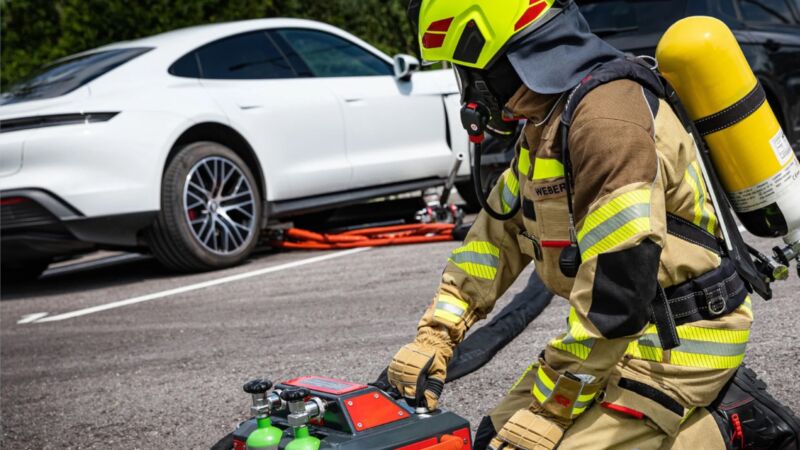
Enlarge / To put out an EV blaze, a firefighter operates the nozzle from a remote control box. (credit: Rosenbauer)
In April, a Tesla Model S crashed in The Woodlands, Texas, after the speeding driver failed to negotiate a turn and jumped the curb. The car then hit a drainage culvert and a raised maintenance hole before being stopped by a tree, according to an investigation report by the National Transportation Safety Board. At that point, the Tesla promptly burst into flames.
Firefighters needed four hours to douse the flames, in part because the battery kept reigniting. When the blaze was finally over, about 30,000 gallons of water had been poured on it—what the department normally uses in a month.
Electric vehicle fires aren’t common, but they’re different enough from fossil-fuel-vehicle fires that firefighters need new approaches. One firm in Europe has developed a shipping container-like box in which a blazing EV can be deposited and blasted with water from all sides. But it requires a dedicated truck, making it a costly addition for a fire department.
